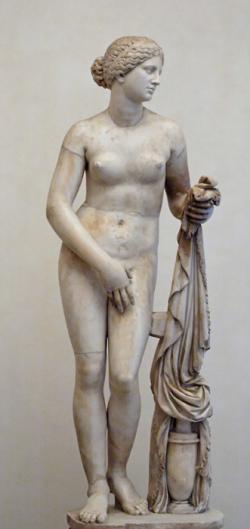Serendip is an independent site partnering with faculty at multiple colleges and universities around the world. Happy exploring!

Friendship between Leah and Natalie
Friendship between Leah and Natalie
Relationships make a novel. Every single piece of stories is connected and combined by relationships of various sorts. Complex relationships among characters make plots splendid. In the novel NW by Zadie Smith, there are lots of relationships not only among characters but also among the backgrounds, the city, the stories and the fates, which makes the novel absorbing and interesting.

self-respect
On one side, Felix was naked and did not intend to cover himself. (Smith 113) On the other side, Natalie was naked, shamefully. (Smith 389) It is interesting to find that Zadie Smith opens two seemingly separated stories of unrelated people with the same settings and portraits. In re-reading this book, I am shocked that there are many similarities between Felix and Nat. However, there are large differences or even contrasts between them, which seem like two people with analogical background turn to adverse directions in lives. Maybe, I think, Felix plays vital rule in this book by acting as another opposite Natalie.

On Vulnerability (co-written with Pia Wong)
 “The man was naked, the woman dressed. It didn’t look right, but the woman had somewhere to go. He lay clowning in bed, holding her wrist. She tried to put a shoe on. Under their window they heard truck doors opening, boxes of produce heaved onto tarmac. Felix sat up and looked to the car park below… Grace tapped the window with a long fake nail: “Babe – they can see you.” Felix stretched. He made no effort to cover himself. “Some people shameless,” noted Grace and squeezed round the bed to straighten the figurines on the windowsill” (113).
“The man was naked, the woman dressed. It didn’t look right, but the woman had somewhere to go. He lay clowning in bed, holding her wrist. She tried to put a shoe on. Under their window they heard truck doors opening, boxes of produce heaved onto tarmac. Felix sat up and looked to the car park below… Grace tapped the window with a long fake nail: “Babe – they can see you.” Felix stretched. He made no effort to cover himself. “Some people shameless,” noted Grace and squeezed round the bed to straighten the figurines on the windowsill” (113).


Quilts
I like textile art, my mom really likes quilts, and they're something I look for whenever I got art museums. They're also something that a lot of people have, and that are often passed down through generations.
A fairly famous example of quilt making in action is the AIDS Memorial Quilt. I, admittedly, don't know a lot about it, but what I do know is pretty interesting. The project was developed in the wake of AIDS to memorialize people who'd died of it and consists of quilt blocks commemorating them, often made by family and friends. In "Queer Temporality," Halberstam talks queer temporality being shaped, in part, by the effect AIDS had (and still has) on the queer community, often referencing a fragility it produced. The quilt that references this temporality also has a long-lasting fragility--it takes a lot to conserve the quilt. It's also still around--it was created in 1987 and now we can still see it.

Classical Sculpture as NW (co-written with Natalie Schall)

“The man was naked, the woman dressed. It didn’t look right, but the woman had somewhere to go. He lay clowning in bed, holding her wrist. She tried to put a shoe on. Under their window they heard truck doors opening, boxes of produce heaved onto tarmac. Felix sat up and looked to the car park below… Grace tapped the window with a long fake nail: “Babe – they can see you.” Felix stretched. He made no effort to cover himself. “Some people shameless,” noted Grace and squeezed round the bed to straighten the figurines on the windowsill” (113).


Why did you apply to Bryn Mawr?
In our disscusion in class about the defiantion and the changing defination of what it means to be a women's college I came to the realization that I have never thought of what it means to be a women's college. For me personally I did not apply to Bryn Mawr because of the fact it is a women's college, I applied and chose to attend because Bryn Mawr has one of the top archaeology programs in the country. So when thinking about coming to Bryn Mawr the fact that is was a women's college didn't really matter to me. I have been meaning to ask in the class: why did you apply to Bryn Mawr and if the main reason for applying is because Bryn Mawr is a Women's college?

Keeping Parts of Yourself Separate
In the class so far one of the things that I’ve been interested in the most is intersectionality. It seems that for many groups intersectionality is seen as a bad thing. There is pressure to identify with one group. Whether it is religious, able -bodiedness, sexuality, gender or race. People want to put you into a box so that you are simpler to understand. That identifying as something else as well makes you less of a part of the other group. It makes you choose, which makes it seem like one aspect is more important than the other. Are you this or that? Most people identify as a variety of things. Many groups that are inclusive of people frown down on intersectionality. Why would groups that help people find their voice hold back the same people from exploring the different aspects to themselves? Why is there pushback against identifying with several groups? Is it the worry that the group’s ideas and goals will conflict with the other groups?
I really like the idea of multi-cultural feminism and I think that it a great way to identify because it encompasses many different aspects. It takes into account that there is more to you then one idea and that all these ideas shape your view. I strongly believe that it is important to embrace your points of view together and not separate them because it’s easier. Even if the groups don’t go together they don’t have to go together. There is no universal rule that your beliefs have to fit perfectly together.

The Struggle Behind a Biracial/Bicultural Marriage
A few months ago, a new commercial from Cheerios surfaced which surprisingly had a terrible response from many viewers. The commercial showed a biracial girl asking her white mother if “cheerios really were good for your heart” who later goes on to pour them over her black father. The cynical comments came from both white and black viewers who were disgusted by the thought of a biracial couple. One of Zadie Smith’s lead couples in her novel NW is also biracial and faces similar negative reactions. The overwhelmingly negative feedback from both the commercial and the characters in NW led me to question how accepted it was to be in a biracial and bicultural relationship along with the problems and barriers that stand in between.

Faculty Use of Social Media Continues to Increase
A recent report from the Babson Survey Research Group and education company Pearson, reviewed by Faculty focus, found that college faculty member's use of social media has continued to increase in the last year. Their results, which are based on an annual survey of 8,000 teaching faculty, looks at both personal and professional use of social media, and found increases in both areas.
On a personal level, faculty's use of social media is on par with the usage level of the general population, reporting in at slightly about 70 percent. Use of social media in professional context has increased almost 11% from last year, up from 44.7 to 55 percent. These gains also reflect an increasingly diverse use of sites and platforms, fulfilling various personal and professional needs.

Structured How?
Ellen Cohn
Play In The City
10/27/2013
Structured How?
Zadie Smith, throughout her novel NW, frequently changes her style of writing depending on whose perspective and voice she is speaking through. This is seen many times throughout the book, and is also mentioned by her in an interview with Cressida Leyshon, a writer for The New Yorker. Smith, while writing the novel NW, set up a rule for herself, which she claims structured her writing differently in the various sections. In the interview with Leyshon, she responded to a question about structure by saying that she looked at “how we experience time,” and how it differs depending on whose perspective we look through (Leyshon 1). Smith mentioned Natalie’s chapters, and how they are structured more chronologically because, in Natalie’s mind, “life is a progression toward some ultimate goal…‘success’” (Leyshon 1). The chapters about Natalie seemed to move more linearly, as we followed her to her successful life, and then back through her fall into her old “Keisha” identity. However, did Smith stick with this rule throughout the entire novel?


